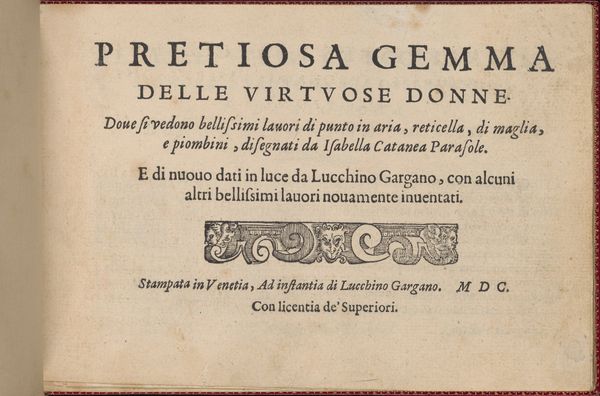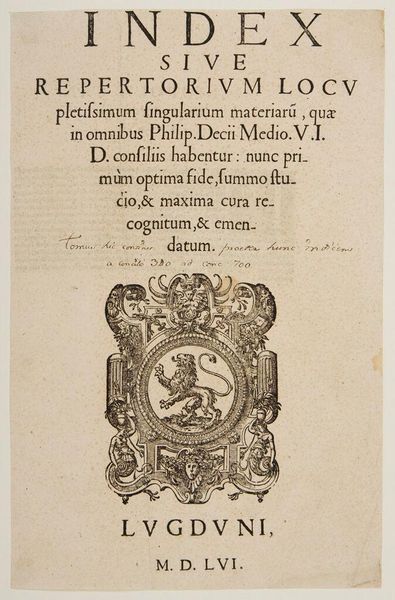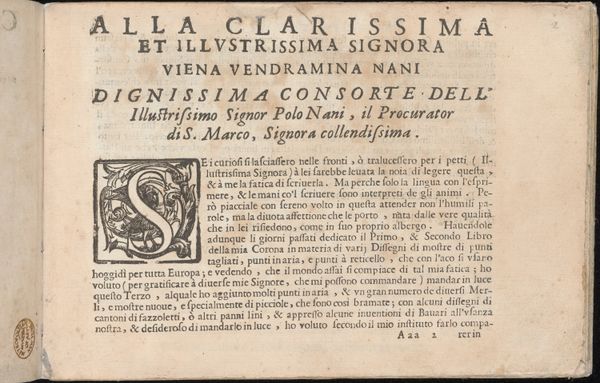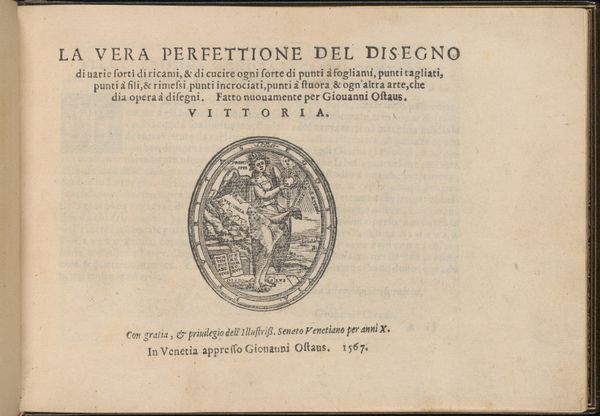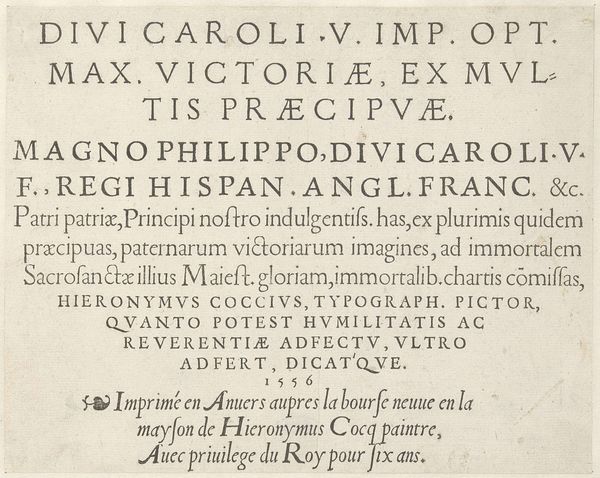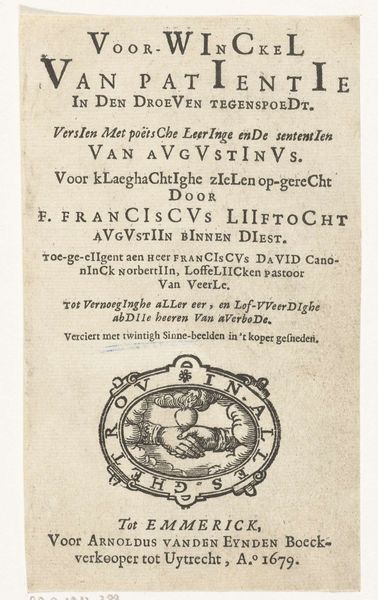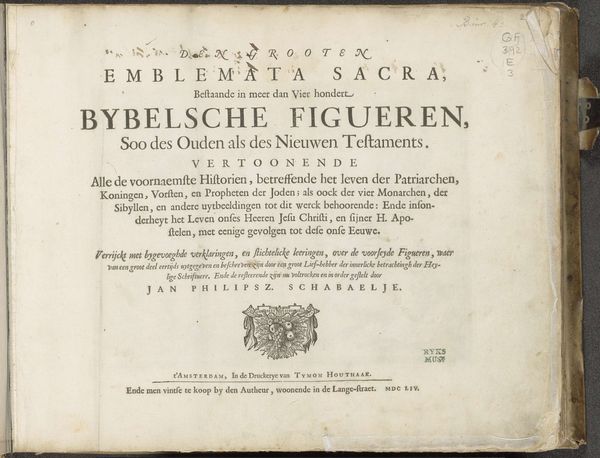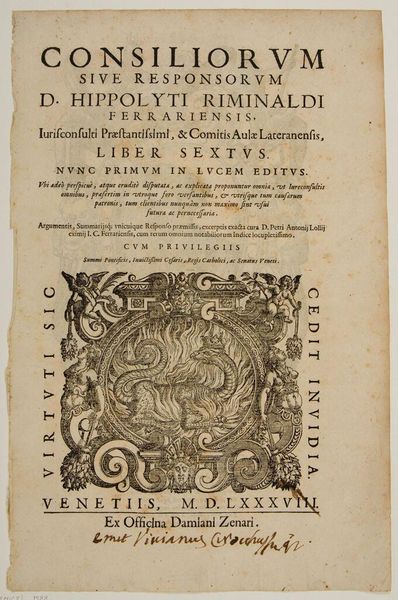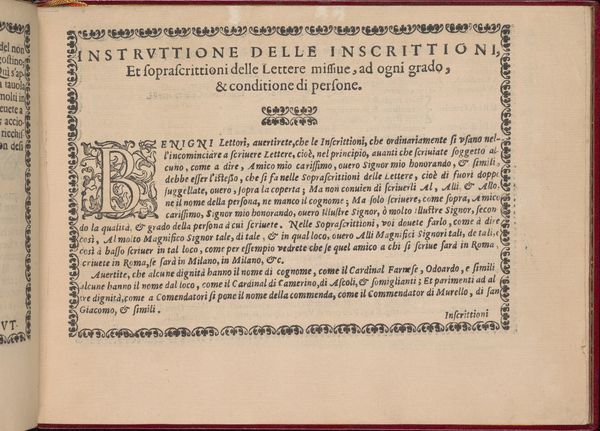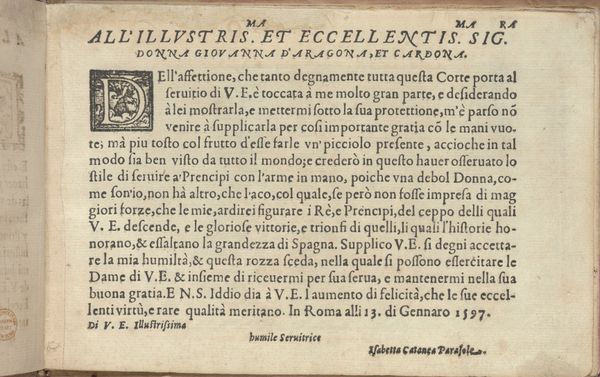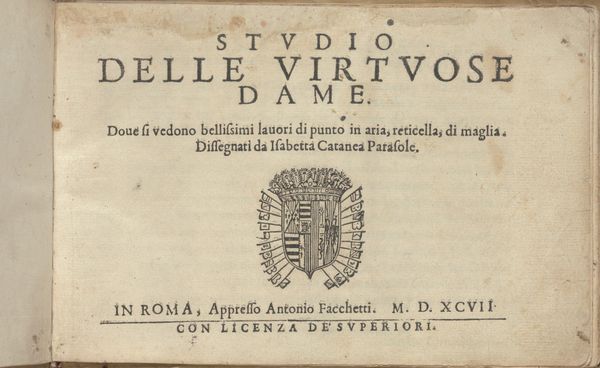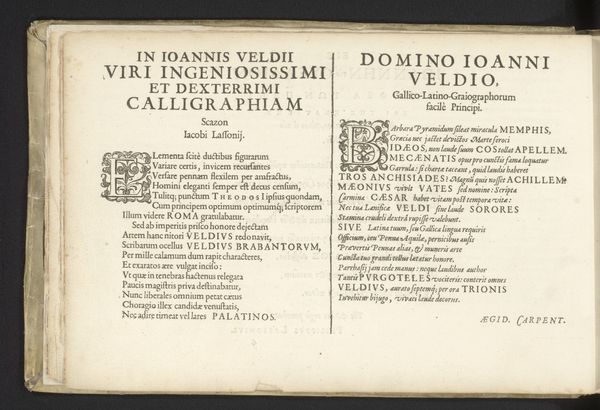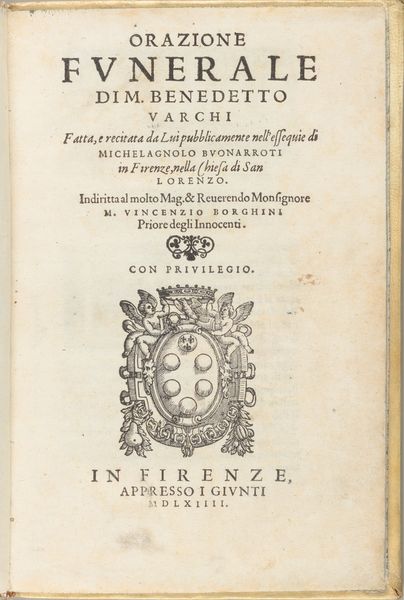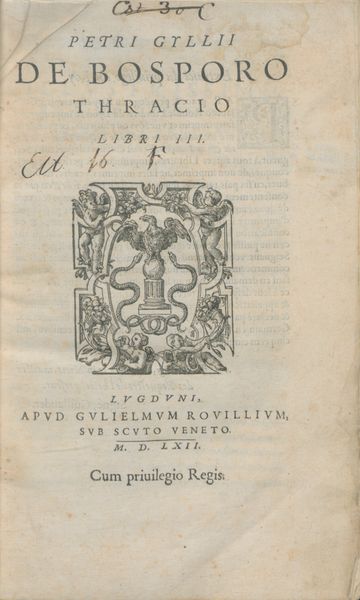
Prima Parte de' Fiori, e Disegni di varie sorti di Ricami Moderni, title page (recto) 1591
0:00
0:00
drawing, graphic-art, print, engraving
#
drawing
#
graphic-art
# print
#
book
#
italian-renaissance
#
engraving
Dimensions: Overall: 5 5/16 x 7 5/16 in. (13.5 x 18.5 cm)
Copyright: Public Domain
Editor: Here we have Giovanni Battista Ciotti's "Prima Parte de' Fiori, e Disegni di varie sorti di Ricami Moderni, title page (recto)," created in 1591, currently residing at the Metropolitan Museum of Art. It's a drawing and engraving intended for print. I am struck by the intricate use of line, particularly in the figure in the center. What compositional elements stand out to you? Curator: The balance between text and image is compelling, wouldn't you agree? Notice how the strong vertical lines of the text are mirrored by the figure's stance, grounding the design. The lettering is also significant. Consider its weight and arrangement, creating a hierarchy of information that guides the eye. Editor: So, you are suggesting that the structure itself conveys meaning? I hadn't considered the visual impact of the lettering so carefully. Curator: Precisely. Furthermore, the use of contrasting textures within the engraved illustration. See the density of lines used to create shadow and depth compared to the relatively spare use of lines elsewhere, indicating a clear awareness of materiality. How might one interpret these material choices? Editor: I see what you mean. It does invite contemplation, I think, on the level of skill involved in this method of reproduction and how the engraving achieves different textures. So interesting to note the formal structure here, but is this always enough? Curator: That depends, wouldn't you agree, on what constitutes 'enough?' Semiotics always offers the art historian multiple avenues toward knowledge, in this example exploring Ciotti's title-page engraving in 1591. What has stuck out most for you? Editor: For me, understanding how the artist played with textual structure and visual representation to guide the viewer through the book. Curator: And I would argue that examining form yields valuable information when looking at this design, even without extensive contextual data.
Comments
No comments
Be the first to comment and join the conversation on the ultimate creative platform.
